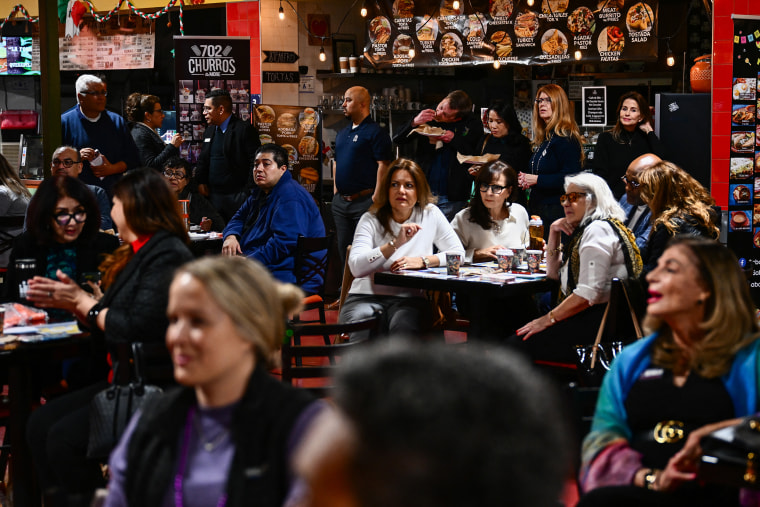Over 17.5 million Latinos are expected to turn out to vote in November — a 6.5% increase from 2020 — numbers that could have a significant impact in key battleground states, according to projections released Wednesday by the National Association of Latino Elected and Appointed Officials (NALEO).
The projected increase reflects the growing number of eligible Hispanic voters, but it's contingent on efforts to ensure that they're registered.
“The takeaway here is that if we are able to get Latinos registered to vote, they will turn out in elections,” the association's CEO, Arturo Vargas, said Wednesday at a news conference.
Dorian Caal, NALEO’s director of civic engagement research, said that in 2020, 88% of Latino registered voters actually voted.
More than 1 in 10 voters in November (11%) are expected to be Latino, according to NALEO — a 20.5% increase from 2016.
States that could see increases in Latino turnout in 2024 versus 2020 are California, by 6.1%; Florida, 13.8%; Nevada, 15.5%; and New York, 12.4%. The turnout rates in Arizona, Georgia, New Jersey and Texas will likely be similar to those in 2020.
NALEO’s projections are based on past trends.
Hoping for high turnout — as in 2020
The 2020 election had a particularly high turnout for all voters.
In a 9-week tracking poll leading up to the 2020 election, NALEO found that three-fourths of Latinos said they were more enthusiastic about voting in 2020 than they were in 2016.
“There are a number of circumstances that affected Latino voter turnout," Vargas said about 2020. "Let’s not forget that election was conducted during the Covid pandemic, which had a severe impact on the health, social and economic well-being of Latinos in their communities."
Other factors that boosted Hispanic voter turnout in 2020 included concerns over lowering the cost of health care and the racial reckoning after the death of George Floyd.
In the 2020 tracking poll, Hispanics also pointed to an increase in outreach by campaigns and other groups.
In 2020, “the turnout rate for all voters nationally was 92%. And for Latinos, 88% of those registered to vote voted,” said Vargas. “So that gap between non-Hispanic voting and Hispanic voting in 2020 came very close to disappearing because of the circumstances that motivated so many people to vote.”
Hispanics are the largest racial and ethnic minority group in the U.S. They numbered 63.7 million in the 2022 Census, or about 19% of the total population.
“So the challenge is getting Latinos registered," Caal said. "And that is something that we need to tackle head-on, because the number of Latinos eligible to vote is growing much faster than any other population."

